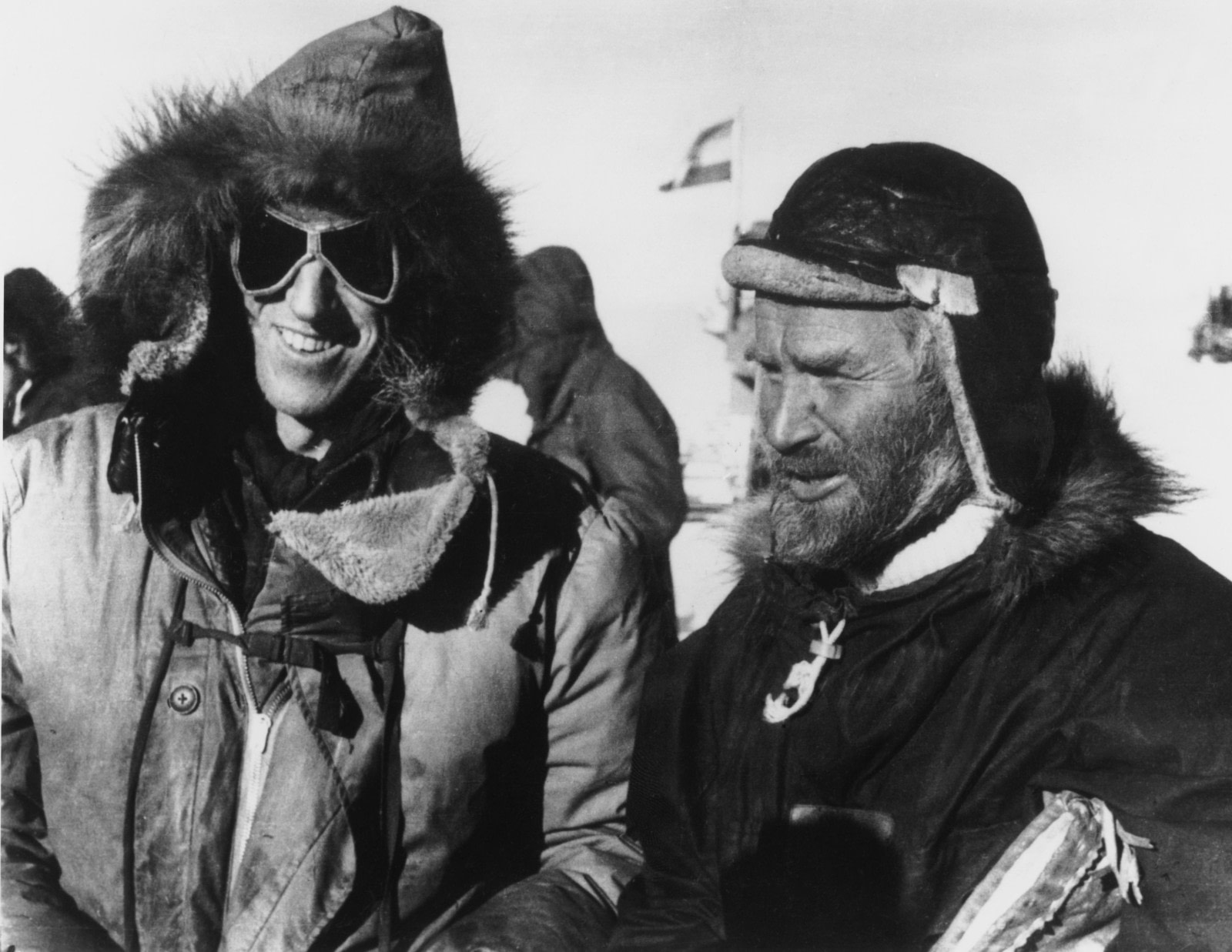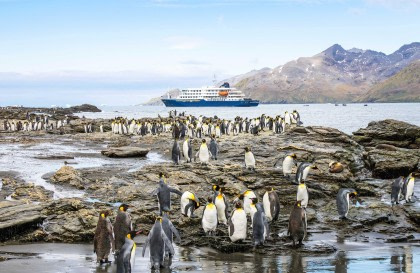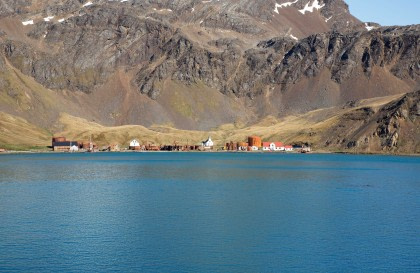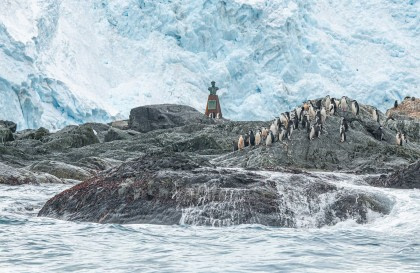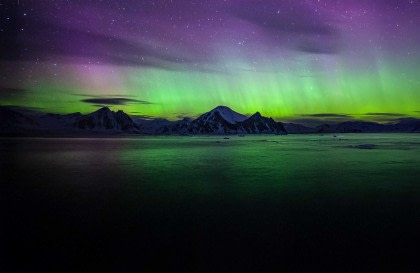Sir Edmund Hillary's alpine exploits are well known, the pinnacle of which was his ascent of Mount Everest alongside Tenzing Norgay in 1953. In a display of tenacity, determination, and the rapid advancement of technology, Hillary conquered the highest peak on Earth, making the mastering of the unachievable a tangible reality.
However, Hillary's exploits on the roof of the world only represented a portion of his achievements at the world's extremes. Alongside other summit expeditions in the Himalayas and other mountain ranges, he also made his mark on Antarctic history when, on 3 January 1958, he reached the South Pole, leading a team as part of the Commonwealth Trans-Antarctic Expedition of 1955-58, becoming the third team in history to do so. With Hillary, modern technology had arrived in force in Antarctica, and the dawn of mechanized polar operations had truly come.
The dawn of the mechanized age of Antarctic exploration
With the conclusion of the so-called Heroic Age of Antarctic Exploration in the 1920s, the mechanical age of Antarctic exploration began to rumble into life. Prior expeditions had endeavored to conquer the pole or discover and chart the far reaches of the frozen continent either by foot, ship, or sled. By the 1920s, advancements in aviation and mechanical technology had transformed how the world's edges could be conquered. Thanks to the exploits of pioneers such as Sir Hubert Wilkins, who became the first to make an overland flight of Antarctica in 1928, and rapid improvements in radio technology and understanding of mechanics, how teams could plan and undertake scientific expeditions to Antarctica had changed dramatically in the years since Shackleton and his men were stranded in the Weddell Sea in 1915. The Antarctic world quickly shrunk as more accurate charts were made possible, and fresh achievements and 'firsts' became sought after, turned into reality by the power of technology.
Following Roald Amundsen's reaching the South Pole in 1911 and the stoic deaths of Robert Falcon Scott's party the same year, the last great achievement for the Antarctic explorer was to make the first land crossing of the Antarctic continent. In the words of Shackleton, this was, ''the one great main object of Antarctic journeyings,'' an object that remained unclaimed well into the 1950s.
With this goal in mind, the Commonwealth Trans-Antarctic Expedition was born. It aimed not only to become the first expedition to reach the South Pole since those of Amundsen and Scott some 46 years later but also to claim one of the last remaining prizes of classic polar exploration.
The Commonwealth Trans-Antarctic Expedition begins
Led by Vivian Fuchs, preparations for the Commonwealth Trans-Antarctic Expedition began in 1955, when Fuchs and a small team sailed from London aboard the Theron, a purpose-built Canadian sealer, aiming for Vahsel Bay, the location in the Weddell Sea where Shackleton had aimed to start his overland expedition back in 1914. However, like the Endurance before her, the Theron became trapped in the ice of the Weddell Sea but, after sustaining heavy damage, could navigate a way out, leaving eight men to overwinter in Antarctica.
This small group, led by Ken Blaiklock, survived harsh conditions, with snowstorms threatening to destroy their hastily erected hut and supplies stockpiled on the shore. Amid temperatures plummeting to below −30 °C, the advance party worked to establish Shackleton Base, scout the future route to the pole, and begin to gather seals for the expedition teams of dogs. In these early stages, the mechanized portion of the expedition came into its own, with an M29 Weasel tractor and Tucker Sno-Cats being crucial in the men's survival.
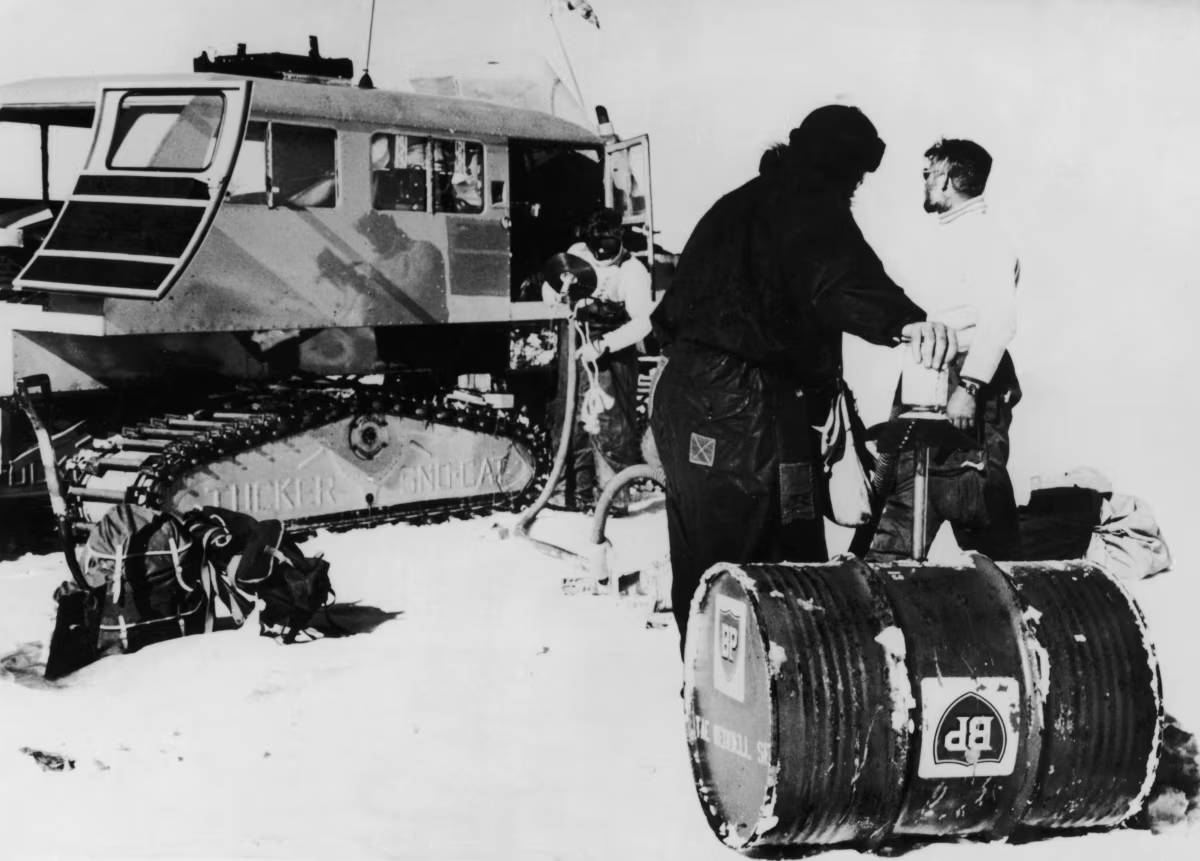
English explorer Vivian Fuchs (1908 - 1999) (right) with a barrel of BP oil and a Tucker Sno-Cat during the Commonwealth Trans-Antarctic Expedition, March 1958
By December 1956, Fuchs returned with additional supplies and spent much of 1957 further reinforcing the base and preparing for the journey ahead. In parallel, a second team, led by Hillary, was busy setting up and establishing Scott Base at McMurdo Sound, intended to be Fuchs' destination after reaching the pole. Hillary and his team would be responsible for pioneering a route towards the pole from the opposite direction, laying stores and supply depots for Fuchs and his team as they crossed over.
Fuchs' expedition team left their base in November 1957, a 12-man team traveling in six vehicles: three Sno-Cats, two Weasel tractors, and an adapted Muskeg tractor. Along the way, the team carried out scientific measurements and research, including seismic soundings of the icy surface. Their route led them across the Filchner Ice Shelf and up into the Shackleton Range, a mountain range characterized by large glaciers and impressive nunataks which was surveyed by Fuchs' team as they ventured south.
After crossing onto the Antarctic plateau, Fuch's team finally reached the south pole on 19 January 1958, where, unexpectedly, Hillary awaited them.
Hillary reaches the South Pole
Initially tasked with establishing Scott Base and laying supply depots on the approach to the pole from the opposite direction as Fuchs, Hillary and his team finished their duties sooner than expected. Hillary, ever daring and a proud New Zealander, spotted an opportunity to beat Fuch's British team to the pole.
Powered by converted tractors, Hillary and his three-man team forged on towards the pole, reaching it on 3 January 1958 and awaiting Fuchs at the newly established Amundsen-Scott South Pole Station. This made Hillary and his team only the third party to reach the pole after Amundsen in 1911 and Scott in 1912 and marked the first time that land vehicles had ever reached the pole.
History is made - the continent is conquered
After Fuchs arrived at the pole, he continued overland, following the route that Hillary and his team had laid. After initially flying back to Scott Base, Hillary rejoined Fuchs and the overland party, which arrived at Scott Base on 2 March 1958, after 99 days and 3,473 kilometers on the exposed, unforgiving Antarctic expanse. History had been made, the continent had been crossed, and the age of mechanized exploration was well and truly here.
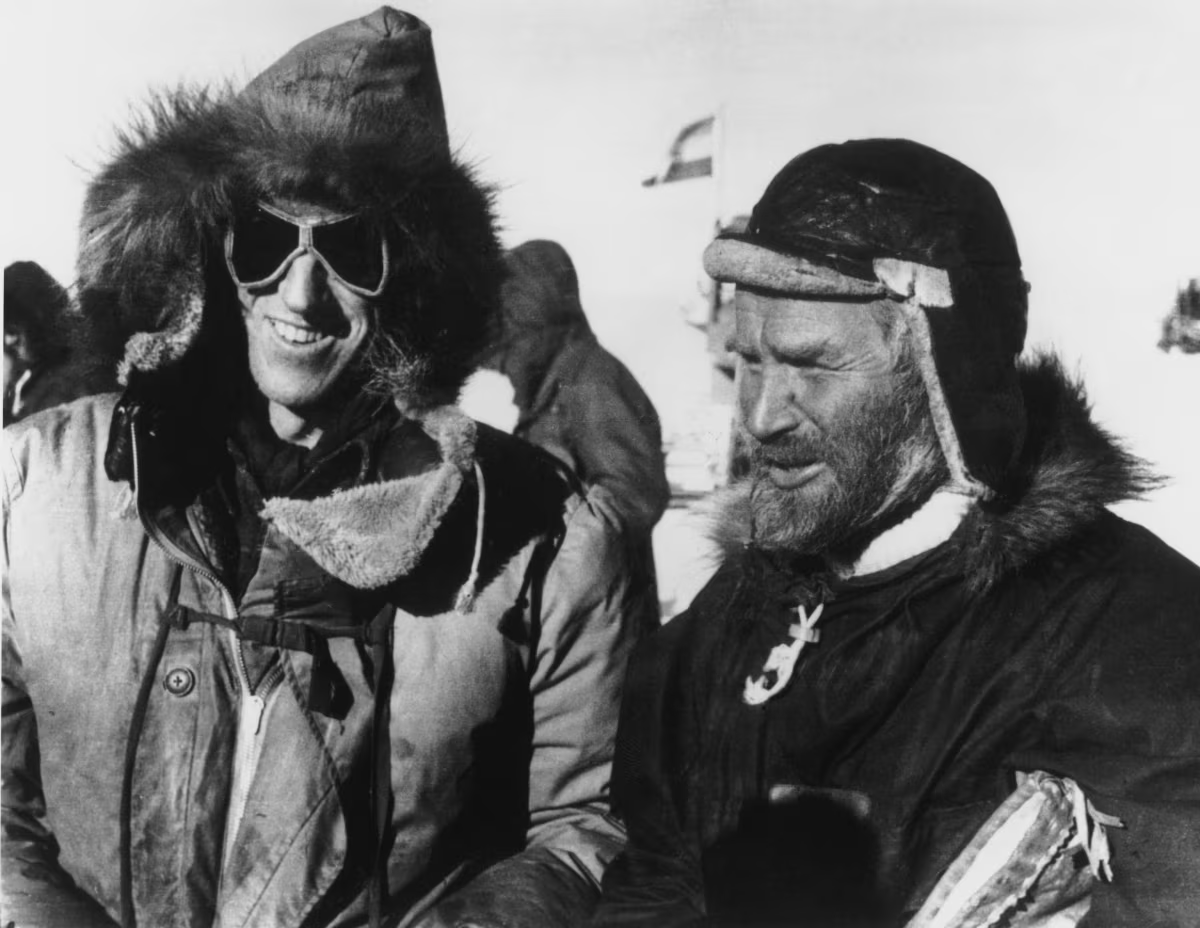
Explorer Sir Edmund Hillary (left) just after meeting English explorer Vivian Fuchs (right) at the South Pole, 20th January 1958.
Throughout, Fuchs' party explored vast swathes of previously uncharted and undocumented land and gathered insightful data and research in various disciplines, including measurements of ice depth at the pole, and the presence of a land mass beneath the ice. Aided by light aircraft for reconnaissance and supply drops, as well as dog teams for scouting and field excursions, the expedition combined the knowledge gained through previous failures in the Antarctic and the power that modern technology offered in surmounting some of the most challenging terrains on Earth.
Fittingly, the route followed that drawn up by Shackleton in his failed Imperial Trans-Antarctic Expedition, of which the Commonwealth Trans-Antarctic Expedition was a spiritual and direct successor, both in action and in reflecting the post-imperial era in which it succeeded. This brought closure to an Antarctic legacy that, in some part, was as much marked by failure as it was imbibed with glory and renown.
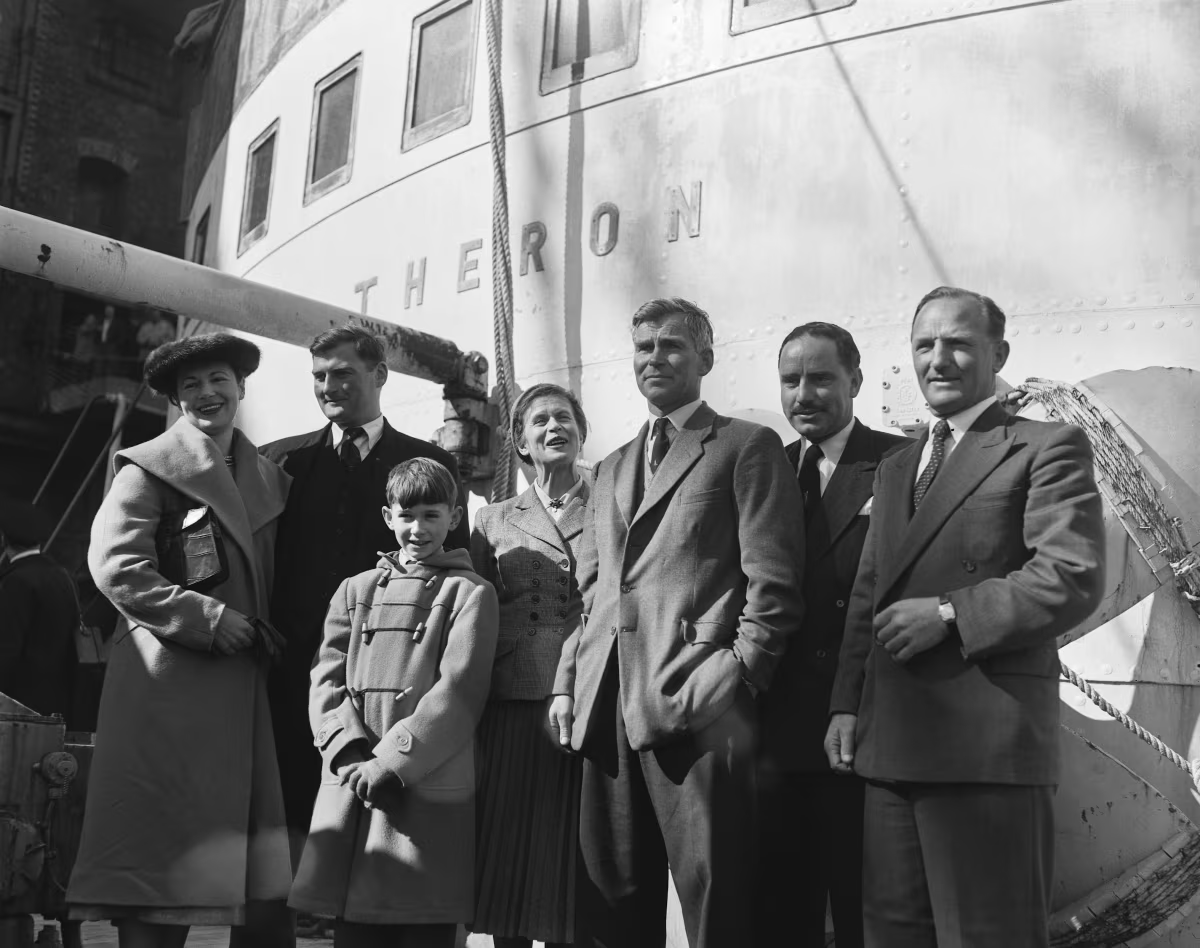
Geologist and explorer Vivian Fuchs (1908-1999) third right, aboard Canadian ship 'Theron' on his return from the Commonwealth Trans-Antarctic Expedition, with wife Joyce (née Connell) fourth right, March 23rd 1956.
For his efforts in leading the expedition, Vivian Fuchs was knighted in 1958. For Hillary, his polar success formed yet another milestone in a remarkable life and career. He would later become the first man to have visited the summit of Mount Everest and both of Earth's poles.
